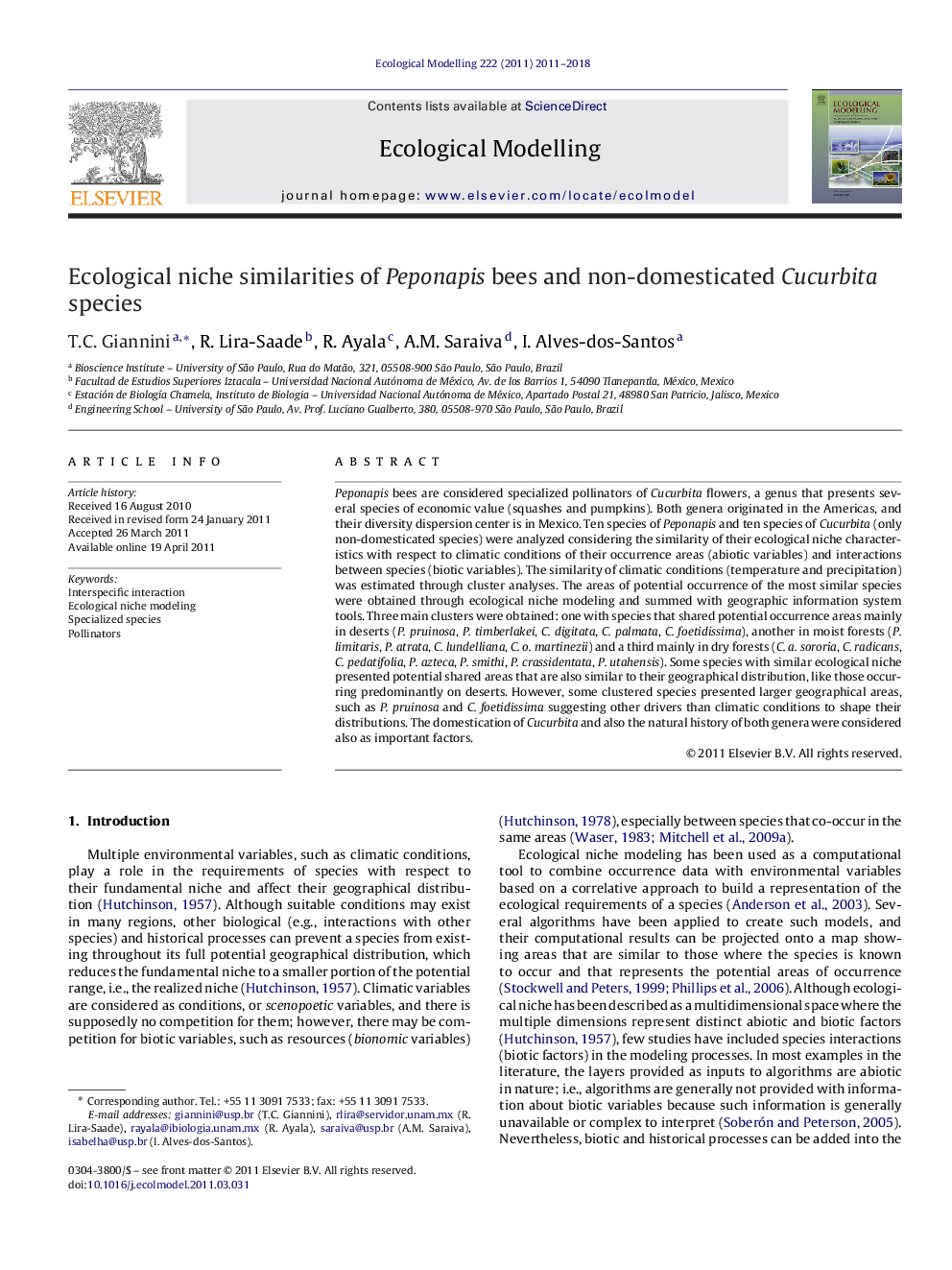| Article ID | Journal | Published Year | Pages | File Type |
|---|---|---|---|---|
| 4376852 | Ecological Modelling | 2011 | 8 Pages |
Peponapis bees are considered specialized pollinators of Cucurbita flowers, a genus that presents several species of economic value (squashes and pumpkins). Both genera originated in the Americas, and their diversity dispersion center is in Mexico. Ten species of Peponapis and ten species of Cucurbita (only non-domesticated species) were analyzed considering the similarity of their ecological niche characteristics with respect to climatic conditions of their occurrence areas (abiotic variables) and interactions between species (biotic variables). The similarity of climatic conditions (temperature and precipitation) was estimated through cluster analyses. The areas of potential occurrence of the most similar species were obtained through ecological niche modeling and summed with geographic information system tools. Three main clusters were obtained: one with species that shared potential occurrence areas mainly in deserts (P. pruinosa, P. timberlakei, C. digitata, C. palmata, C. foetidissima), another in moist forests (P. limitaris, P. atrata, C. lundelliana, C. o. martinezii) and a third mainly in dry forests (C. a. sororia, C. radicans, C. pedatifolia, P. azteca, P. smithi, P. crassidentata, P. utahensis). Some species with similar ecological niche presented potential shared areas that are also similar to their geographical distribution, like those occurring predominantly on deserts. However, some clustered species presented larger geographical areas, such as P. pruinosa and C. foetidissima suggesting other drivers than climatic conditions to shape their distributions. The domestication of Cucurbita and also the natural history of both genera were considered also as important factors.
► Ten species of Peponapis and ten species of Cucurbita (only non-domesticated species) were analyzed considering the similarity of their ecological niche characteristics. ► Some species with similar ecological niche presented potential shared areas that are also similar to their geographical distribution, like those occurring predominantly on deserts. ► However, some clustered species presented larger geographical areas, such as P. pruinosa and C. foetidissima suggesting other drivers than climatic conditions to shape their distributions. The domestication of Cucurbita and also the natural history of both genera were considered also as important factors.
